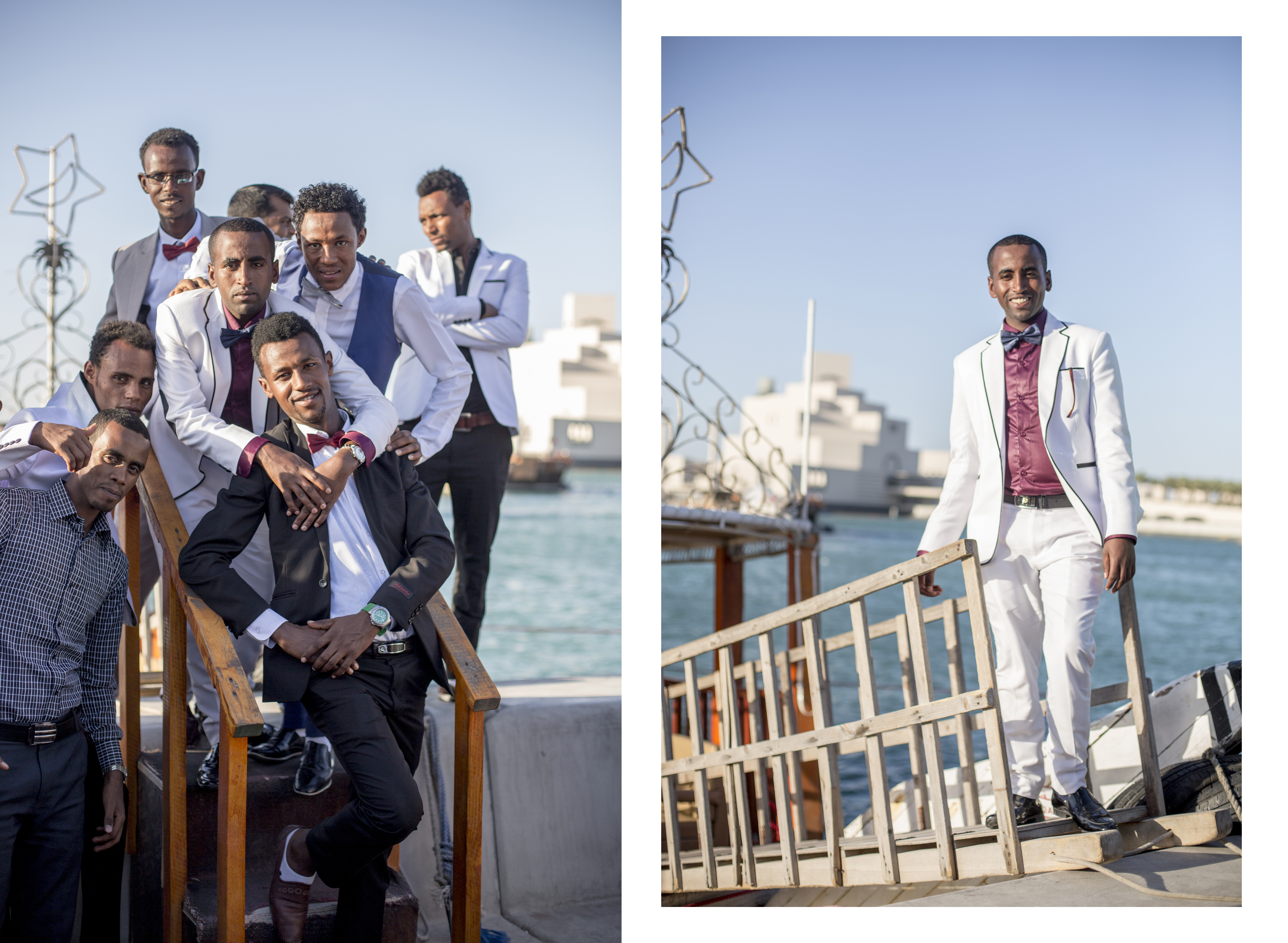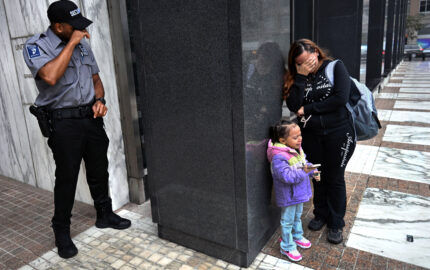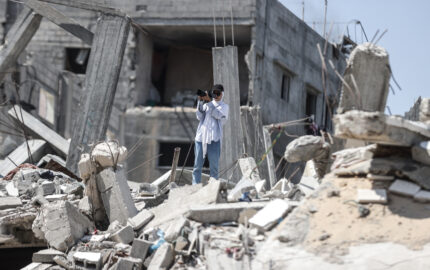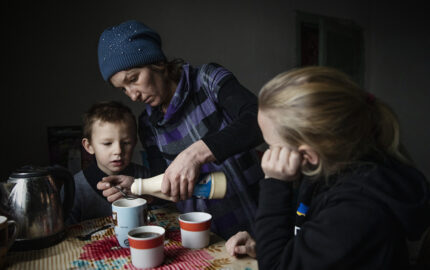I grew up in Mumbai, where I worked as an independent photographer for many years, before relocating to Doha in 2014. I was immediately struck by the affluence of the Persian Gulf, as well as the gulf between the displays of wealth and the silent presence of migrant workers. I researched the topic to find that migrant workers made up about 90% of Qatar – about 1.4 million workers in total. It became my mission to use my platform as a social documentary photographer to represent this invisible population.
I found myself brainstorming ways to accomplish this task. As a foreign woman, gaining access to restricted work sites or all-male accommodations seemed challenging, if not impossible. And, I wanted to break away from the “victim narrative” — depicting somber images of marginalized communities — and instead create a more hopeful way to tell their stories.
It was during this time of reflection that I crossed paths with Khalid Albaih, my next-door neighbor, who had also been thinking along the same lines. A renowned political cartoonist, Khalid is a Sudanese native raised within the cultural milieu of Qatar. He observed how the fabric of Doha society had changed over time, with the influx of migrants working at a furious pace to create the infrastructure for the 2022 FIFA World Cup.
Khalid had conceived the idea of photographing workers on Fridays, their day off. During the rest of the week, they don overalls and uniforms, but on Fridays, they gather along the Corniche, Doha’s vibrant waterfront, for fresh air and time with their friends, expressing themselves through their fashion. I collaborated with Khalid to create a strong visual language for the project. We launched “Doha Fashion Fridays” in 2016.
The intention of “Doha Fashion Fridays” is to challenge stereotypes about migrant workers and go beyond the stories that flatten them into invisible, faceless statistics. We want to show them as individuals with hopes, dreams, and aspirations — to learn more about their backgrounds, the nature of their work, their experiences in Qatar, their lives back home, and their plans for the future. We want to hear from them in their own words — and to see how they express themselves through their personal style.
One day we met a group of very well-dressed young Ethiopian men, all of them in suits and bowties. Ali Tulu, a 25-year-old, was wearing an all-white suit. He looked particularly happy and was beaming. We found out that it was his wedding day, and he had just had his nikkah ceremony over a phone call. His bride was back home in his village in Ethiopia. It would have been too expensive to fly back for the wedding. Instead, he was celebrating the day with his friends on the Corniche. I felt honored to be his official wedding photographer and shared the photos with him to send back home. These are the kinds of stories we’ve had the privilege to tell.
Over the next few years, Khalid and I would head to the Corniche on Fridays (skipping the brutal summer months) to meet more interesting characters and learn their stories. Khalid speaks Arabic, and I speak Hindi and a smattering of other South Asian languages. Between the two of us we’re able to communicate with almost everyone. It would always move me to meet women who were working as nannies here in Doha, while having left their own children behind to be raised by other family members.
We’ve made hundreds of photographs and created a body of work that brings together people from Nepal, South Sudan, Pakistan, Nigeria, and Kenya, working in construction, restaurants, education, and childcare, to name just a few industries. We share the images via our Instagram channel @dohafashionfridays because we wanted to reach the widest possible audience. Our work has traveled to St. Petersburg, Russia, as part of the “Contemporary Art Qatar” show and to New York City for another show called “Kafala: Migrant Labor in the Arabian Peninsula.” We are now working on a book about the photographs with the same goal we started with — to create more dialogue around migrant culture in the region.



